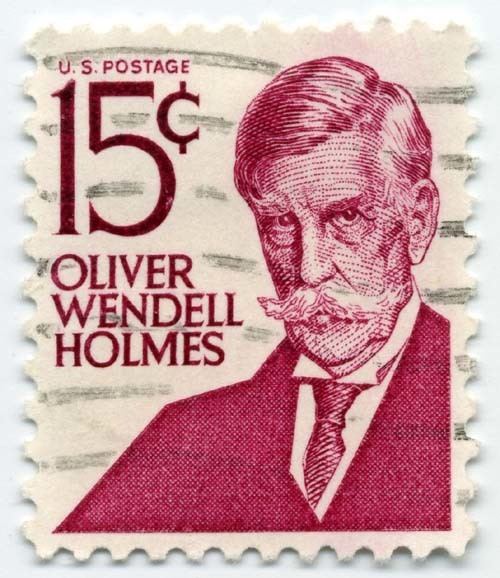The Prominent Americans series is a set of definitive stamps issued by the United States Post Office Department (and later the United States Postal Service) between 1965 and 1978.
It superseded the Liberty issue of 1954, which by the mid-1960s had become somewhat dated, for instance in its focus on political figures. This was the first U. S. omnibus definitive series in which Benjamin Franklin did not appear at or near the beginning: on the ½¢ or 1¢ stamp. The values of the new series included figures from all walks of life, each depicted in a different style by a different designer, presumably in a quest for wide diversity—a significant departure from the uniformity of concept that had marked previous definitive issues. That portraits of two women appear in the series (Elizabeth Blackwell and Lucy Stone) represented a small but significant step toward gender equality in U. S. Stamp history: no previous definitive set had included more than one prominent female (Martha Washington in the issues of 1902, 1922 and 1938; Susan B. Anthony in the Liberty series). This was also the first definitive issue to include a stamp devoted to an African-American, with Frederick Douglass portrayed on the 25¢ denomination.
The stamps appeared one by one from 1965 on, and the basic designs had all been issued by 1968; tagged versions made their first appearances gradually through 1973, and coil and booklet version of the 15¢ were issued in 1978 in response to a first-class rate change.
The 5¢ Washington was originally excessively shaded around the lower part of the face, so much so that it has come to be known as the "dirty face" or "unshaven" Washington. Originally appearing in February 1966, it was superseded by a lightened version in November 1967. The $1 Eugene O'Neill stamp was notable for its repeated use by Theodore Kaczynski, the Unabomber, who habitually used them on his mail bombs.
Stamps of the series:
1¢ green - Thomas Jefferson, third President of the United States1¼¢ light green - Albert Gallatin, fourth Secretary of the Treasury, founder of New York University, scientist, diplomat, member of the Senate and of the House of Representatives2¢ dark blue gray - Frank Lloyd Wright, architect, with Guggenheim Museum3¢ violet - Francis Parkman, historian4¢ black - Abraham Lincoln, 16th President of the United States5¢ blue - George Washington, first President of the United States6¢ gray brown - Franklin Delano Roosevelt, 32nd President of the United States6¢ dark blue gray - Dwight Eisenhower, 34th President of the United States7¢ bright blue - Benjamin Franklin, politician, political theorist, diplomat, first U. S. Postmaster General, inventor, founder of the predecessor of the University of Pennsylvania and journalist8¢ violet - Albert Einstein, physicist8¢ black, red blue gray (sheet) - Dwight Eisenhower8¢ claret (coil and booklet) - Dwight Eisenhower10¢ lilac - Andrew Jackson, seventh President of the United States12¢ black - Henry Ford, founder of Ford Motor Company, shown with the Ford Model T13¢ brown - John F. Kennedy, 35th President of the United States14¢ gray brown - Fiorello LaGuardia, 99th Mayor of New York City15¢ claret - Oliver Wendell Holmes, Jr., Supreme Court Justice16¢ light brown - Ernie Pyle, World War II journalist18¢ purple - Elizabeth Blackwell, physician20¢ olive - George C. Marshall, Chief of Staff of the Army, Secretary of State and Secretary of the Treasury21¢ olive - Amadeo Giannini, founder of the Bank of America25¢ rose lake - Frederick Douglass, abolitionist (born a slave), political activist, author and orator30¢ reddish lilac - John Dewey, educational reformer, philosopher and psychologist40¢ bluish black - Thomas Paine, political activist, political theorist and author50¢ magenta - Lucy Stone, abolitionist, suffragist and political activist$1 dull purple - Eugene O'Neill, playwright and winner of the Nobel Prize in Literature$5 gray black - John Bassett Moore, jurist
